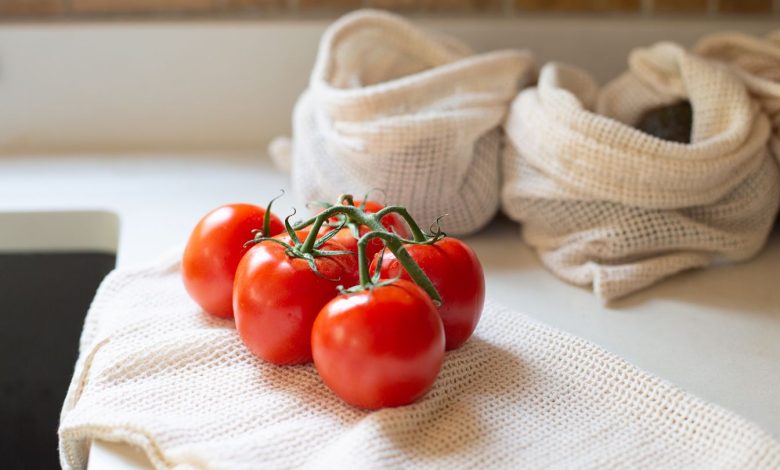Higher Tomato Consumption Linked to Lower Blood Pressure

[ad_1]
Tomatoes are among the top foods recommended by the American Heart Association (AHA) to help manage high blood pressure, specifically because they are rich in potassium, which is known to ease hypertension.
Now, a new scientific paper further lends further support to the power of the tomato when it comes to heart health.
In the study, which involved more than 7,000 adults between ages 55 and 80, researchers in Spain found that eating the equivalent of one large tomato (about 4 ounces) each day could cut high blood pressure risk by as much as 36 percent.
“Tomato is one of the most consumed, widely available, and affordable vegetables worldwide, and it is an important component of the best diets, such as the Mediterranean diet,” wrote coauthor Rosa Maria Lamuela-Raventós, MD, director of the Institute for Research on Nutrition and Food Safety and an associate professor at the University of Barcelona. “Tomato consumption may play a favorable clinical role in the prevention and management of elevated blood pressure.”
The study, published this November in the European Journal of Preventive Cardiology, followed participants over the course of three years. Nearly 6 in 10 were women.
Just over 82 percent already had high blood pressure at the beginning of the study, but all participants had factors that put them at high risk for heart trouble, such as diabetes, smoking, high cholesterol, obesity, a family history of early onset cardiovascular disease, or some combination of these factors.
Lower Heart Disease Risk Linked to High Consumption of Tomatoes
The researchers divided individuals with high blood pressure into three categories:
- Grade 1 hypertension, systolic 140 to 159 mmHg and diastolic 90 to 99 mmHg
- Grade 2 hypertension, systolic 160 to 179 mmHg and diastolic 100 to 109 mmHg
- Grade 3 hypertension, systolic 180 mmHg or higher and diastolic 110 mmHg or higher
Normal blood pressure, according to the AHA, is less than 120 systolic and less than 80 diastolic.
During the course of the study, participants also completed questionnaires about their diet and physical activity. Daily tomato consumption was determined from items in the food questionnaire such as raw tomato, tomato sauce, and gazpacho, a cold Spanish tomato soup blended with extra-virgin olive oil, garlic, and other vegetables.
Individuals were categorized in four groups of daily tomato consumption, with the lowest group ingesting 1.5 ounces of tomato or less and the highest group eating about 4 ounces or more.
Overall, Dr. Lamuela-Raventós and her collaborators observed an association between eating more tomatoes and lower blood pressure readings.
In addition to the 36 percent lower overall hypertension risk in the highest consumption group compared with the lowest consumption, the scientists calculated a significant drop in the diastolic measure (down 0.65 mmHg) between those eating a medium amount of tomatoes and those in the lowest consumption group.
They also highlighted that reductions in both systolic and diastolic blood pressure were only significant in the grade 1 hypertension participants and not in the groups with higher blood pressure levels.
“The absence of an inverse association between tomato consumption and blood pressure in grade 2 and 3 hypertension could be attributed to the elderly nature of the study population, most of whom had long-standing hypertension at baseline, as well as high cardiovascular risk factors that make it difficult to reach significant change,” wrote the authors.
The Tomato as Part of a Healthy Diet
While a number of previous studies have also suggested tomatoes offer benefits for blood pressure, the study authors also recognized that some prior results have been mixed as far as the tomato’s actual impact on heart health.
Still, they speculate that tomatoes may help improve blood pressure because they have specific minerals and compounds such as lycopene that have antioxidant and anti-inflammatory effects.
Sean Heffron, MD, a preventive cardiologist and director of fitness-focused cardiology in the Center for the Prevention of Cardiovascular Disease at NYU Langone Heart in New York City, noted that the study is limited in that much of the data is self-reported and results are based on observational analysis, rather than established through a randomized clinical trial in which tomato consumption and blood pressure would be specifically and uniformly measured among a closely followed group of patients.
“That said, we already have randomized clinical trial data to support that diets rich in whole grains, fresh fruits, and vegetables can help reduce blood pressure,” says Dr. Heffron, who was not involved in the study. Diets like these also align with guidelines from the American College of Cardiology and the American Heart Association.
He cautions against focusing on the tomato as “the magic food that is going to cure all your ills,” suggesting rather that it be considered part of a diverse heart-healthy diet.
[ad_2]




